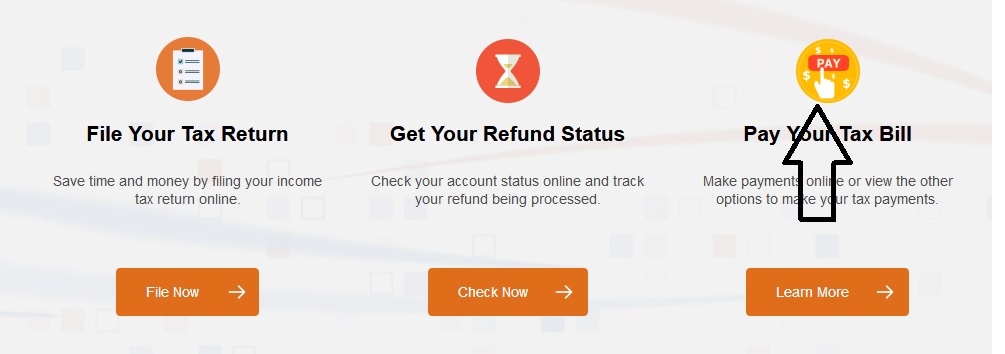barbados.gov.bb IRD Registration of New Employer for PAYE : Inland Revenue Department
Organization : Inland Revenue Department
Type of Facility : Registration of New Employer for PAYE
Country: Barbados
| Want to comment on this post? Go to bottom of this page. |
|---|
Website : https://www.gov.bb/
IRD Registration of New Employer for PAYE
PAYE is a withholding tax and it simply means ‘Pay As You Earn.’ PAYE was introduced in Barbados in 1957 and there have been several changes over the years.
Related : Inland Revenue Department Tax Refund Certificate Barbados : www.statusin.org/7264.html
Currently every employee who earns a wage or salary of more than $481 per week or $2083 per month is liable to PAYE.

But Why P.A.Y.E?:
It was once said that the only sure things are taxes and death and since we must pay taxes, PAYE is the best way for employed persons to meet their tax obligations without too much undue hardship. The PAYE system simply allows the employee the luxury of paying his or her taxes in twelve or fifty-two manageable instalments as the case may be.
Put differently, the P.A.Y.E. system allows the employee the privilege of paying his or her taxes for an income year over a longer period than having to face paying a large tax bill when the return is filed.
How Does One Get Started?:
Every employer who has persons earning more than $481 per week or $2083 per month is required to register as an employer with the Commissioner of Inland Revenue. He/she is then issued with all the required forms.
1. The first form we will focus on is the Employee Declaration Form, A47: 001. All employees must complete this form. It allows the employer to determine the relevant tax Code under which the employee will be taxed. Each employed person starts with a basic allowance of $25,000 and this can increase depending on the amount of the allowances that person has claimed.
2. A person claiming $25,000 would have a tax code of 250W or 250M depending on whether that person was paid weekly or monthly. The code enables the employer to deduct the correct amount of tax from each employee.

3. Another form issued to the employer is the PAYE Tax Deduction Remittance Form, A47:004. After taxes have been deducted from all persons liable to tax the employer is obligated to pay all sums over to the Commissioner on or before the 15th of the month following the month in which it was deducted.
4. This form, A47.004, (available online) is used to remit all sums to the Inland Revenue Department. Employers should be sure to include their Account Numbers. Payments may be posted, hand delivered or placed in our 24 hr. mailbox on the north side of the Ground Floor, Treasury Building.
5. The Tax Tables Booklet contains a set of instructions to each employer. These instructions, !f closely followed, will greatly assist the users in deducting the correct amount of tax. They will also advise the employer what amounts are taxable, what amount must be deducted for the month from the employee and how to account for the amounts deducted.
6. The main function of the Tax Tables is to show the employer how much PAYE to deduct from each person’s pay package. This book contains over 300 pages with tables that make it as simple as possible for its users. The PAYE section is staffed by officers who are responsible for the rendering of any assistance needed.
Persons who are employed with more than one employer must complete and file one Employee Declaration Form only with the employer of his or her choice. The wages or salary earned from the other employer(s) is then to be taxed under table X. This means that no allowances are taken into account in the deduction of P.A.Y.E. In other words, the total amount earned with the second employer is taxed at between 20% to 38%.
If an employee feels too much or too little tax is being deducted from his/her wages or salary that person may in writing give notice of complaint, stating the grounds of his complaint, to the Commissioner.
If after the Commissioner has investigated the complaint and found that too much tax has been deducted from the emoluments of that person, she shall as soon as
P.A.Y.E / Enforcement
The Enforcement Division is staffed by auditors who make daily visits to all businesses to:-
** ensure that the correct amount of PAYE is being deducted and remitted to this Department; and
** offer any assistance to payroll officers or employers with any PAYE related difficulties.
Reminders:
1. Employers are reminded that PAYE payments are due on or before the fifteenth day of the month following the month in which it was deducted. Late payments attract penalties and interest. Please note, the Commissioner does not have the authority to waive penalties and interest, this authority is vested only in the Minister of Finance.
2. Every person paying to any other person a salary or wage, “shall deduct or withhold there from such amount as is prescribed, and pay the amount so deducted or withheld to the Commissioner, as a prepayment of tax of the person to whom the amount would otherwise have been paid.” Section 64 – 1. Income Tax Act Cap 73.
3. Every employer is required to furnish employees with parts one and two of the Return of Remuneration, A47:00&’009 by February 28 of the year following the year in which the remuneration was paid. Part three of the same forms are to be sent to the Commissioner by the same date. Failure to do so cord result in a fine not exceeding $10 for every day throughout which the failure continues. See Regulations 73 (1) and 83 respectively of the Income Tax Act Cap 73.
How can I find out the status of my return?
I do not see anything for year 2015. Can you please help?